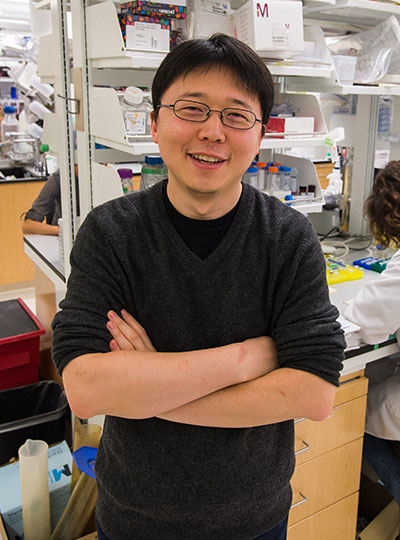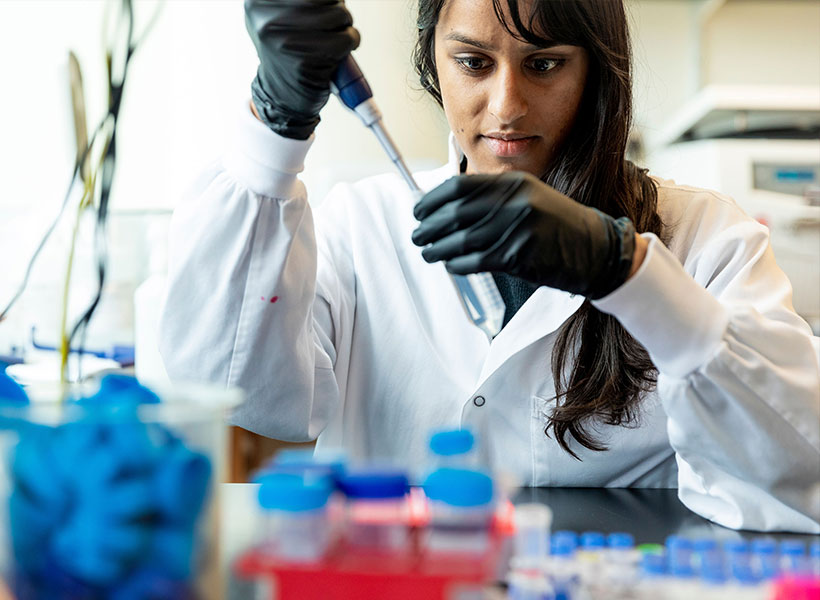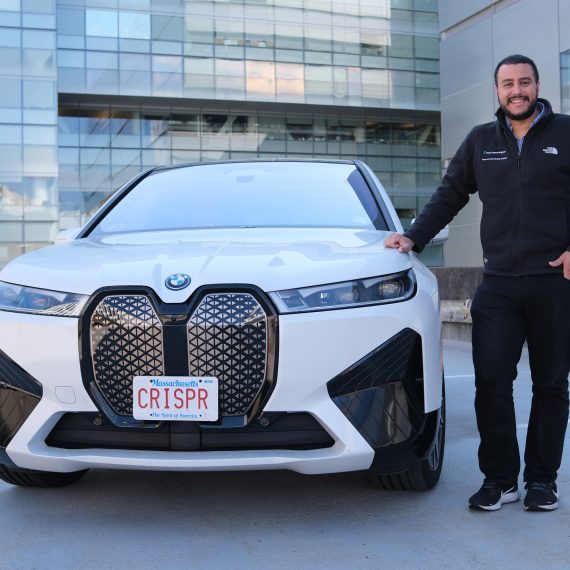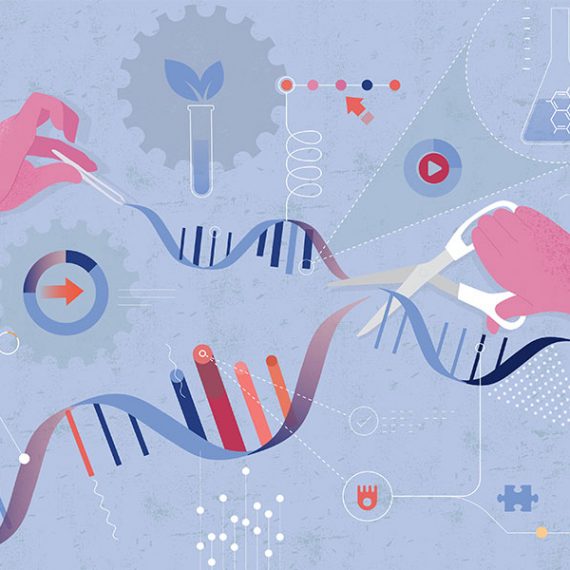CRISPR: From toolkit to therapy
McGovern researchers are expanding the CRISPR toolbox toward gene therapy for neurons.

Think of the human body as a community of cells with specialized roles. Each cell carries the same blueprint, an array of genes comprising the genome, but different cell types have unique functions — immune cells fight invading bacteria, while neurons transmit information.
But when something goes awry, the specialization of these cells becomes a challenge for treatment. For example, neurons lack active cell repair systems required for promising gene editing techniques like CRISPR.
Can current gene editing tools be modified to work in neurons? Can we reach neurons without impacting healthy cells nearby? McGovern Institute researchers are trying to answer these questions by developing gene editing tools and delivery systems that can target — and repair — faulty brain cells.
Expanding the toolkit

Natural CRISPR systems help bacteria fend off would-be attackers. Our first glimpse of the impact of such systems was the use of CRISPR-Cas9 to edit human cells.
“Harnessing Cas9 was a major game-changer in the life sciences,” explains Feng Zhang, an investigator at the McGovern Institute and the James and Patricia Poitras Professor of Neuroscience at MIT. “But Cas9 is just one flavor of one kind of bacterial defense system — there is a treasure trove of natural systems that may have enormous potential, just waiting to be unlocked.”
By finding and optimizing new molecular tools, the Zhang lab and others have developed CRISPR tools that can now potentially target neurons and fix diverse mutation types, bringing gene therapy within reach.
Precise in space and time
A single letter change to a gene can be devastating. These genes may function only briefly during development, so a temporary “fix” during this window could be beneficial. For such cases, the Zhang lab and others have engineered tools that target short-lived RNAs. These molecules act as messengers, carrying information from DNA to be converted into functional factors in the cell.
“RNA editing is powerful from an ethical and safety standpoint,” explains Soumya Kannan, a graduate student in the Zhang lab working on these tools. “By targeting RNA molecules, which are only present for a short time, we can avoid permanent changes to the genetic material, and we can make these changes in any type of cell.”

Zhang’s team has developed twin RNA-editing tools, REPAIR and RESCUE, which can fix single RNA bases by bringing together a base editor with the CRISPR protein Cas13. These RNA-editing tools can be used in neurons because they do not rely on cellular machinery to make the targeted changes. They also have the potential to tackle a wide array of diseases in other tissue types.
CAST addition
If a gene is severely disrupted, more radical help may be needed: insertion of a normal gene. For this situation, Zhang’s lab recently identified CRISPR-associated transposases (CASTs) from cyanobacteria. CASTs combine Cas12k, which is targeted by a guide RNA to a precise genome location, with an enzyme that can insert gene-sized pieces of DNA.
“With traditional CRISPR you can make simple changes, similar to changing a few letters or words in a Word document. The new system can ‘copy and paste’ entire genes.” – Alim Ladha
Transposases were originally identified as enzymes that help rogue genes “jump” from one place to another in the genome. CAST uses a similar activity to insert entire genes self-sufficiently without help from the target cell so, like REPAIR and RESCUE, it can potentially be used in neurons.
“Our initial work was to fully characterize how this new system works, and test whether it can actually insert genes,” explains Alim Ladha, a graduate fellow in the Tan-Yang Center for Autism Research, who worked on CAST with Jonathan Strecker, a postdoctoral fellow in the Zhang lab.
The goal is now to use CAST to precisely target neurons and other specific cell types affected by disease.
Toward delivery
As the gene-editing toolbox expands, McGovern labs are working on precise delivery systems.Adeno-associated virus (AAV) is an FDA-approved virus for delivering genes, but has limited room to carry the necessary cargo — CRISPR machinery plus templates — to fix genes.
To tackle this problem, McGovern Investigators Guoping Feng and Feng Zhang are working on reducing the cargo needed for therapy. In addition, the Zhang, Gootenberg and Abudayyeh labs are working on methods to precisely deliver the therapeutic packages to neurons, such as new tissue-specific viruses that can carry bigger payloads. Finally, entirely new modalities for delivery are being explored in the effort to develop gene therapy to a point where it can be safely delivered to patients.
“Cas9 has been a very useful tool for the life sciences,” says Zhang. “And it’ll be exciting to see continued progress with the broadening toolkit and delivery systems, as we make further progress toward safe gene therapies.




